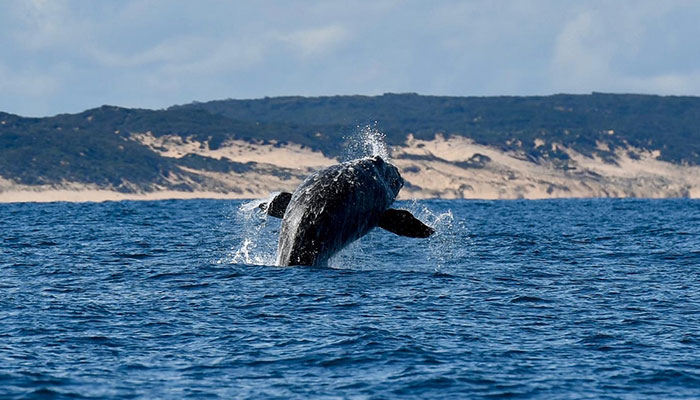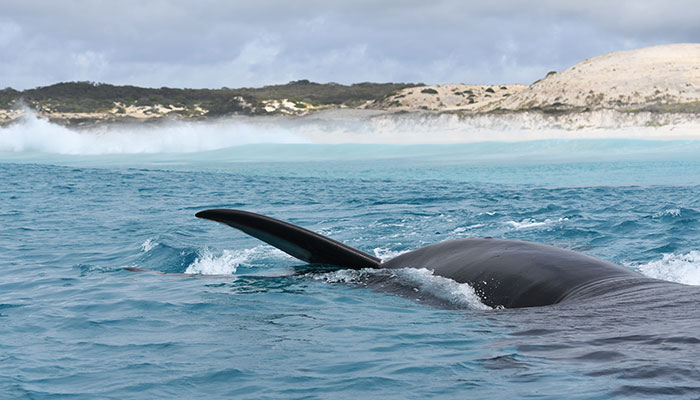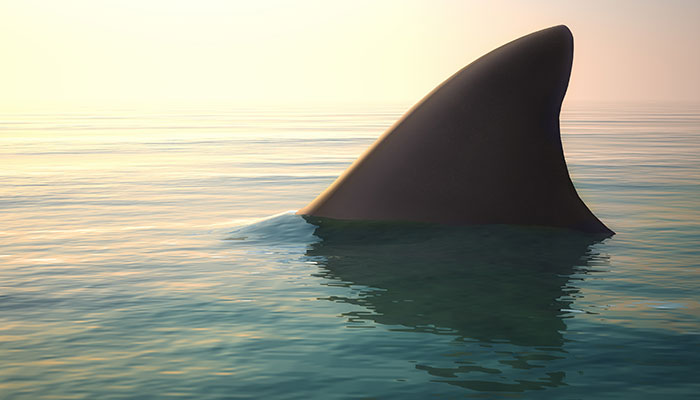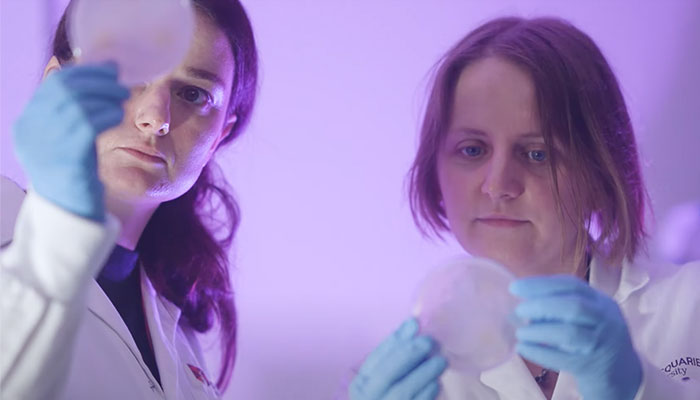Scientists have analysed chemicals in the skin of southern right whales to give new insights into where the animals are feeding, as well as new data into long-term environmental changes in the Southern Ocean.

Spectacular moments in the field: A young southern right whale calf breaches in the waters off Augusta in Western Australia during the 2022 research project. Photo credit: Professor Robert Harcourt.
Antarctic feeding patterns have changed but not uniformly, says Macquarie University Honorary Professor of Marine Ecology Robert Harcourt, co-author in the global study comparing whale behaviour today with records dating back to 1792.
The research, published in Proceedings of the National Academy of Sciences (PNAS), showed foraging grounds have changed over time.
“These results suggest that climate change has driven recent shifts in the distribution of southern right whales,” says Harcourt, who led the Australian arm of the study.
Researchers from 36 countries including Australia, the US, Argentina, Brazil, South Africa, Europe, UK and New Zealand, measured the amounts of various carbon and nitrogen isotopes in 1002 skin samples taken between 1994 and 2020, usually by shooting a retrievable dart that collects a small patch of skin.
Concentrations of these isotopes vary between different marine locations and animals feeding in an area retain that isotopic fingerprint in their skin. It takes up to six months for the isotopes to show up in a whale’s skin and so scientists can pinpoint where the animals were earlier in the year.
How climate change alters ocean structure
Locating the whales with any precision in the past has been problematic, says Harcourt.
“Despite their large size, whales can be very hard to track,” says Harcourt. “Using this technique, we have been able to piece together a map of where the Southern Right Whales have travelled across the Southern Ocean,” he says.
What’s happening today differs significantly from the past, the research shows. The study analysed 2614 whale-catch records from 1792 to 1968, using data from American whaling ships.
The study shows ... climate change isn’t having the same effect everywhere and knowing this could help prioritise areas where conservation efforts should be focussed.
This data suggests that previously, southern right whale foraging grounds were largely stable in mid latitudes. This is no longer the case, although not all populations have reacted uniformly.
The southern right whales in the South Atlantic Ocean and southwest Indian Oceans, for example, travel to Antarctic waters less often, probably due to declining krill populations.
In the southwest Pacific, however, whales still head south at certain times of the year, suggesting krill remain plentiful in that ocean basin.

“The study has shown the critical importance of understanding how wide-ranging animals are adapting their movements as climate change fundamentally alters ocean structure and where they may find their prey,” says Harcourt.
“It also shows that climate change isn’t having the same effect everywhere. Knowing this could help prioritise areas where conservation efforts should be focused.”
This could include altering shipping routes and controlling fishing in important foraging areas for the whales.
- Survey shows high level of hearing loss in Australia
- Renters, single-parent households among Australians going hungry
Southern right whales were hunted to near extinction, with whalers killing an estimated 150,000 between the 18th and mid-20th centuries. The global population collapsed to as few as 400 individuals.
Following international protection in 1935, the species has staged a moderate recovery in parts of its historical range with the Australian population estimated at around 3500 individuals.
“Ongoing research, including satellite tracking of individual animals from major populations along with continued tissue collection, will further refine our understanding of important ocean regions for these magnificent ocean giants,” says Harcourt.
Professor Robert Harcourt is an Honorary Professor of Marine Ecology at Macquarie University. He is an expert in marine biology, specialising in marine conservation, marine ecosystems, animal behaviour and ecology.



